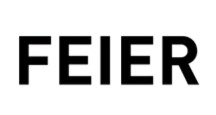Article content
For years, the arrival of the Toronto Blue Jays in Seattle brought a familiar sight: tens of thousands of exuberant Canadians pouring into the city to cheer on their baseball team.
Breadcrumb Trail Links Canada World Baseball MLB Toronto Blue Jays Tourism officials on both sides of the border report that travel has dropped sharply amid political tension and economic uncertainty. Author of the article: Bloomberg News Anna Edgerton Published May 09, 2025 • 2 minute read You can save this article by registering for free […]

Tourism officials on both sides of the border report that travel has dropped sharply amid political tension and economic uncertainty.

For years, the arrival of the Toronto Blue Jays in Seattle brought a familiar sight: tens of thousands of exuberant Canadians pouring into the city to cheer on their baseball team.
Advertisement 2
Article content
Article content
Article content
But this year, the crowds are noticeably thinner. Keen to bring them back, Seattle is offering a hefty discount — in hopes of reviving the cross-border tradition during three games this weekend against the Seattle Mariners at T-Mobile Park.
Iconic seafood restaurant Ivar’s, the Space Needle and the Pacific Science Center are among dozens of businesses participating in the promotion that accepts Canadian dollars at par all weekend. With the loonie worth just 72 U.S. cents, that effectively gives visitors who show Canadian IDs about a 30% discount.
“I think we’re earning goodwill, which is what we wanted with our neighbours,” said Ivar’s founder Bob Donegan. “But we are not seeing a significant increase in the number of Blue Jay fans coming to Seattle.”

Tourism officials on both sides of the U.S.-Canada border report that travel has dropped sharply amid political tension and economic uncertainty.
Article content
Advertisement 3
Article content
At the Blaine, Washington border crossing, a major entry point for visitors from Vancouver, southbound traffic was down 52% in the first two weeks of April compared to the same period last year. Passenger arrivals on Air Canada flights to Seattle-Tacoma International Airport dropped 66% in March.
Canadians cite frustration with U.S. policies under President Donald Trump, including tariffs and his repeated suggestion that Canada should become the 51st state. Other travelers are avoiding the U.S. over fears of being detained or pulled aside for questioning at the border as part the Trump administration’s broader immigration crackdown.
Adding to the strain, Canada’s economy is showing signs of weakness. Data released Friday showed the country’s unemployment rate rose to 6.9% in April amid job losses in sectors like manufacturing that are affected by tariffs.
Advertisement 4
Article content
The program to accept Canadian currency, called “Open Arms for Our Canadian Friends,” includes hotels, restaurants and even transportation companies like FRS Clipper, a boat service between Seattle and Victoria, British Columbia, as well as Kenmore Air, which runs seaplanes between Washington State and western Canada.
Even with this effort, Donegan said that looking out his window on Friday, he saw none of the signature Blue Jays ballcaps that typically swarm the area during the games.
He also said interviews that he’s done with Vancouver radio stations in recent days have been followed by angry fans calling in to say they’re “so irritated with the American policy that they are not coming to town.”
“They’re typically delightfully goofy Canadians who are so friendly and so focused,” Donegan said. “So we miss them a lot.”
Read More
Article content
Wearable Heart Monitoring Devices Market Insights Global Wearable Heart Monitoring Devices Market size was valued at USD 2.35 Billion in 2023 and is poised to grow from USD 2.60 Billion in 2024 to USD 6.10 Billion by 2032, growing at a CAGR of 11.3% in the forecast period (2025-2032). The market is primarily driven by […]
Global Wearable Heart Monitoring Devices Market size was valued at USD 2.35 Billion in 2023 and is poised to grow from USD 2.60 Billion in 2024 to USD 6.10 Billion by 2032, growing at a CAGR of 11.3% in the forecast period (2025-2032).
The market is primarily driven by mounting cases of cardiovascular diseases, growing health consciousness, and the need to monitor patients in real-time. Wearable technology adoption for managing chronic conditions, especially across the elderly populations in North America and Asia-Pacific, is fueling global uptake.
Growth drivers include increasing investment in digital health infrastructure, increasing clinical adoption of connected devices, and consumers’ desire for non-invasive, real-time monitoring solutions. Furthermore, the availability of AI-fueled analytics and Bluetooth-based heart rate and ECG monitors boosts the degree of accuracy and ease of operation of devices. Important trends in the market are convergence to remote patient monitoring, miniaturization of medical-grade sensors, and technology giants and healthcare players entering into strategic partnerships. There also exists a need for wearables with in-built diagnostic and alarm functions. The market also has some important challenges in the form of data privacy issues, challenges in obtaining regulatory approvals, and the expense involved in high end medical grade wearables.
How is AI Transforming Innovation in Wearable Heart Monitoring Devices?
AI is transforming the wearable heart monitoring devices segment by enriching device functionality, streamlining diagnostics, and providing real time health information. Wearables are able to identify irregular heart rhythms, like atrial fibrillation, with medical grade accuracy using AI based algorithms bridging the chasm between consumer electronics and clinical diagnoses. Personalized tracking, adaptive notification, and foresight health trends are turning into mainstream capabilities in future generation devices.
AI also maximizes power efficiency, improves data interpretation, and facilitates effortless integration with telehealth platforms. These technologies are facilitating more precise, accessible, and proactive cardiac care—establishing AI as a fundamental product innovation driver in the wearable heart monitoring devices market
Market snapshot – (2025-2032)
Remote Patient Monitoring
Global Wearable Heart Monitoring Devices Market ($ Bn)
Country Share for North America Region (%)
To get more reports on the above market click here to
Buy The Report
The wearable heart monitoring devices market is segmented into product type, device type, application, distribution channel, and region. Based on product type, the market is segmented into electric pulse-based products and optical technology-based product sources. Based on device type, the market is segmented into diagnostic and monitoring devices and therapeutic devices. Based on application, the market is segmented into sports & fitness, remote patient monitoring, and home services. Based on distribution channel, the market is segmented into online retail, pharmacies, consumer electronics stores, hospitals & clinics, and others. Based on region, the market is segmented into North America, Asia-Pacific, Europe, Latin America, and Middle East & Africa.
Which Application is Leading in Wearable Heart Monitoring Devices Market? Sports & fitness currently dominate the wearable heart monitoring devices market. This segment benefits from increasing health awareness, rising adoption of fitness-focused wearables, and a growing culture of proactive health monitoring. Devices such as smart earbuds and fitness trackers with built-in heart rate sensors are widely used by athletes, gym-goers, and health-conscious consumers. The demand is further driven by real-time monitoring features, ease of use, and integration with mobile health apps that help users track cardiovascular performance during workouts and daily activities.
As per the global wearable heart monitoring devices market forecast, remote patient monitoring represents the fastest-growing segment. The rise in chronic cardiovascular conditions, an aging population, and the need for post-hospitalization care at home are fueling demand. Technological advancements and increased use of telehealth services have further accelerated adoption in this segment.
Which Device Type Segment Accounts for Largest Share in Wearable Heart Monitoring Devices Industry?
According to global wearable heart monitoring devices market research, diagnostic and monitoring devices remain dominant due to their critical role in tracking cardiovascular health in real time. These devices, often integrated into wearables like earbuds and fitness trackers, are essential for collecting accurate physiological data such as heart rate, ECG, and blood oxygen levels. Their ability to provide continuous, non-invasive monitoring makes them highly valuable for fitness enthusiasts, patients with chronic heart conditions, and healthcare providers aiming for early detection and preventive care.
However, therapeutic devices are the fastest growing sub segment, driven by increasing demand for devices that not only monitor but also support treatment and recovery. These include wearables that assist in managing arrhythmias or aid in cardiac rehabilitation. With the growing emphasis on personalized healthcare, home based treatment, and integration of AI driven insights, therapeutic wearables are gaining traction as a future ready solution for managing heart health effectively outside of clinical settings.
Global Wearable Heart Monitoring Devices Market By Application (%)
To get detailed analysis on other segments,
Request For Free Sample Report
What Makes North America Dominating Region in Global Wearable Heart Monitoring Devices Market?
As per regional forecast, the wearable heart monitoring devices market in North America is highly developed and innovation led, driven by a robust digital health infrastructure, strong healthcare spending, and high awareness of cardiovascular conditions. The presence of key technology providers and early adoption of remote patient monitoring systems continue to shape market dynamics. Increasing chronic disease prevalence, particularly heart disease and hypertension, contributes to sustained demand for advanced wearable solutions.
Wearable Heart Monitoring Devices Market in the United States
The U.S. leads the global market in both consumption and innovation, backed by a large patient base, strong regulatory framework, and early integration of wearables into clinical practice. Strategic collaborations between healthcare systems and tech firms such as Apple, Fitbit, and Withings have fueled adoption. Reimbursement frameworks for remote monitoring and proactive wellness tracking further support market expansion.
Wearable Heart Monitoring Devices Market in Canada
Canada mirrors U.S. trends but at a more measured pace. The demand is largely driven by growing healthcare digitization and increased focus on elderly care. Remote and rural healthcare delivery challenges are addressed by wearable adoption, especially for cardiac event detection. Government support for digital health programs is also encouraging wider usage among patients with chronic conditions.
What Drives Growth in the Asia Pacific Wearable Heart Monitoring Devices Market?
Asia Pacific is one of the fastest growing regions in the wearable heart monitoring devices market due to rising lifestyle related illnesses, improving healthcare access, and a tech savvy population. Countries like China, India, and South Korea are witnessing growing demand for affordable and connected cardiac health devices. The expansion of mobile internet infrastructure and growing investment in telehealth platforms also fuel market development.
Wearable Heart Monitoring Devices Market in Japan
Japan’s market is advanced, yet aging population driven. Wearable heart monitoring solutions are increasingly integrated into elderly care systems and insurance-backed wellness programs. Trust in medical grade accuracy, product quality, and seamless health data tracking plays a critical role in consumer adoption.
Wearable Heart Monitoring Devices Market in South Korea
South Korea is rapidly integrating wearable technology into its smart healthcare ecosystem. With strong government backing for health tech innovation and widespread digital connectivity, the country is seeing rising usage of AI powered cardiac monitoring wearables. The local tech industry’s strength contributes to domestic innovation and competitive pricing.
How Does Europe Lead Ethical and Patient-Centric Innovation in Wearable Heart Monitoring Devices?
Europe is a mature and regulatory focused market emphasizing ethical data usage, patient safety, and sustainable healthcare. The region leads in integrating wearable technology into national health systems, supported by strong policies on digital health adoption and medical device compliance. Consumer confidence is driven by high data privacy standards and growing health consciousness.
Wearable Heart Monitoring Devices Market in Germany
Germany stands out for clinical grade wearable device adoption, particularly in hospitals and outpatient care. The country’s emphasis on health data protection, along with structured reimbursement systems for remote monitoring, supports market maturity. Innovation is driven by partnerships between medical tech firms and university hospitals.
Wearable Heart Monitoring Devices Market in the United Kingdom
The UK market is defined by high public health awareness and NHS-backed digital health programs. Wearables are widely used for early diagnosis and self-care management of cardiovascular diseases. Post-Brexit regulatory alignment and innovation grants are promoting local development and wider patient access to smart heart monitoring tools.
Wearable Heart Monitoring Devices Market in Italy
Italy is witnessing growing adoption of wearable heart monitors, especially among elderly populations and in preventive cardiology. Increased focus on home based health tracking and chronic disease management is driving demand. Urban centers show higher penetration, while rural expansion is supported by telehealth services and regional healthcare initiatives.
Global Wearable Heart Monitoring Devices Market By Geography
To know more about the market opportunities by region and country, click here to
Buy The Complete Report
Wearable Heart Monitoring Devices Market Drivers
Increasing Incidence of Cardiovascular Diseases and the Role of Early Diagnosis
Integration with Digital Health Ecosystems and Remote Monitoring
Wearable Heart Monitoring Devices Market Restraints
Privacy and Regulatory Compliance for Health Data
Issues of Cost and Availability in Emerging Markets
Request Free Customization
of this report to help us to meet your business objectives.
The competitive landscape of Wearable Heart Monitoring Devices Market are driven by a group of global tech companies, med tech giants, and niche health startups racing for innovation supremacy. Apple, Google owned Fitbit, and Garmin deploy networked ecosystems, brand power, and advanced R&D capabilities to pursue consumer grade monitoring segments. These offerings are multimodal in nature, syncing heart monitoring with fitness, sleep, and wellness features placing them as lifestyle health products. Healthcare device companies like Philips, irhythm, and biobeat innovate with clinical precision, FDA cleared diagnostics, and easy plug and play integration into hospitals and telemedicine infrastructures. They’re masters of prolonged monitoring, arrhythmia detection, and far from clinic patient care and are priceless partners for global healthcare systems. Strategic partnerships with cardiology centers and payers are driving product growth into home care and outpatient settings.
In 2024, Medtronic augmented its family of wearable ECG patches with AI capability through partnerships with remote care platforms in Europe and the U.S., expanding its clinical footprint and engaging patients more through cloud-based analytics and real-time alerts. Established startups are transforming the industry with wearable biosensors and analytics driven by artificial intelligence that provide affordable, real-time surveillance of cardiovascular health. They prioritize usability, simplicity, and EMR to health app compatibility. Such solutions appeal to consumers and clinicians eager to have simple and scalable monitoring.
Top Player’s Company Profiles
Recent Developments in Wearable Heart Monitoring Devices Market
• In March 2024, Biobeat Technologies Ltd. launched its next generation wearable biosensor capable of measuring cardiac output and stroke volume continuously without invasive procedures. This upgrade enhances early detection of cardiovascular complications in high risk patients and is being piloted in several European hospitals under remote monitoring programs.
• In April 2024, Philips announced a strategic collaboration with U.S. based AI startup heart logic AI to integrate machine learning-based arrhythmia prediction models into its wearable patch ECG systems. The partnership aims to advance real-time diagnostic accuracy and improve long-term cardiac care for both home and clinical settings.
• In May 2024, Apple Inc. unveiled a new health focused Apple Watch feature, Smart heart+, which uses AI to identify subtle heart rate fluctuations indicative of early atrial fibrillation. Approved by the U.S. FDA, the update reinforces Apple’s expansion into regulated health monitoring and is positioned as a preventive care tool for aging users and those with chronic cardiac conditions.
• AI-Driven Personalized Monitoring Is Picking Up Pace: Wearable heart monitors in 2024 are more and more augmented with AI driven functionalities that allow real time, customized cardiac information. The technologies assist in the early identification of arrhythmias and facilitate user specific health alerts based on patterns of user data, greatly enhancing patient activation and preventive care.
• Telehealth Platform Integration Is Fuelling Adoption: As telemedicine expands all over the world, wearable tech is proving to be the hub of remote cardiac monitoring. During 2024, top manufacturers have ranked foremost in terms of unproblematic integration with telehealth and EHR systems, so that clinicians can picture patients’ cardiovascular well being in real time and alter treatment in real time especially in geriatric and high risk patients.
SkyQuest’s ABIRAW (Advanced Business Intelligence, Research & Analysis Wing) is our Business Information Services team that Collects, Collates, Correlates, and Analyses the Data collected by means of Primary Exploratory Research backed by robust Secondary Desk research.
As per SkyQuest analysis, Key drivers of market growth include rapid advancements in sensor technology and artificial intelligence, which enhance the accuracy, responsiveness, and usability of heart monitoring devices for both clinical and personal use. The main market growth driver is the rising global prevalence of cardiovascular diseases, fueling demand for continuous, non invasive monitoring tools to detect early symptoms and manage chronic conditions efficiently. The widespread shift toward home based and remote cardiac care, supported by growing healthcare digitization, continues to accelerate wearable device adoption. However, the market faces a significant restraint in terms of regulatory complexity and health data privacy concerns. As these devices collect sensitive biometric information, they must comply with stringent frameworks like HIPAA and GDPR, which can slow product development and international deployment. Ensuring data security and ethical handling remains a top challenge for manufacturers. Geographically, Asia Pacific is emerging as a major growth hub due to increasing healthcare investments, widespread smartphone penetration, and greater public awareness of preventive health. Countries such as China, India, and Japan are actively promoting digital health infrastructure and wearables for remote patient monitoring, contributing to rapid market expansion across urban and rural populations.
| Report Metric | Details |
|---|---|
| Market size value in 2023 | USD 2.35 Billion |
| Market size value in 2032 | USD 6.10 Billion |
| Growth Rate | 11.3% |
| Base year | 2024 |
| Forecast period | (2025-2032) |
| Forecast Unit (Value) | USD Billion |
| Segments covered |
|
| Regions covered | North America (US, Canada), Europe (Germany, France, United Kingdom, Italy, Spain, Rest of Europe), Asia Pacific (China, India, Japan, Rest of Asia-Pacific), Latin America (Brazil, Rest of Latin America), Middle East & Africa (South Africa, GCC Countries, Rest of MEA) |
| Companies covered |
|
| Customization scope |
Free report customization with purchase. Customization includes:-
|
To get a free trial access to our platform which is a one stop solution for all your data requirements
for quicker decision making. This platform allows you to compare markets, competitors who are prominent
in the market, and mega trends that are influencing the dynamics in the market. Also, get access to
detailed SkyQuest exclusive matrix.
Buy The Complete Report
to read the analyzed strategies adopted by the top vendors either to retain or gain market share
AI In Sports Use code ONLINE30 to get 30% off on global market reports and stay ahead of tariff changes, macro trends, and global economic shifts. AI In Sports Market Size Growth Forecast: What to Expect by 2025? In recent times, the market size of AI in sports has seen significant expansion. The market value […]


AI In Sports
Use code ONLINE30 to get 30% off on global market reports and stay ahead of tariff changes, macro trends, and global economic shifts.
AI In Sports Market Size Growth Forecast: What to Expect by 2025?
In recent times, the market size of AI in sports has seen significant expansion. The market value is projected to rise from $2.39 billion in 2024 to $3.1 billion in 2025, ensuing a compound annual growth rate (CAGR) of 29.8%. Factors contributing to growth in the historic phase include the demand for performance optimization, enhancement of fan engagement, injury prevention and management, strategic decision-making, and enhancement of market competitiveness.
How Will the AI In Sports Market Size Evolve and Grow by 2029?
The AI in sports market is predicted to experience tremendous growth in the coming years, expanding to a size of “$8.7 billion by 2029 with a compound annual growth rate (CAGR) of 29.5%. Factors contributing to this projected growth during the forecast period include the advancement of sports analytics, improvements in athlete development programs, worldwide implementation of AI technologies, rising focus on data security, and the incorporation of wearable technologies. Key trends for the forecast period involve the spread of AI in esports, AI-powered sports betting and predictive analytics, issues related to ethical use and data privacy, partnerships with sports science and medical fields, and AI-enabled personalized fan experiences.
View the full report here:
https://www.thebusinessresearchcompany.com/report/ai-in-sports-global-market-report
What Drivers Are Propelling the Growth of AI In Sports Market Forward?
The growth of AI in the sports market is predicted to be driven by an increase in demand for real-time data analytics. This refers to the continuous analysis of data as it is produced or received, enabling organizations to make instant and informed choices based on the latest data. The necessity for quick, informed decisions based on current information is increasing the demand for real-time data analytics. In the world of sports, AI-powered real-time data analytics provide teams with the ability to pull out valuable insights, improve performance, and make strategic decisions during games by evaluating player and game statistics as they happen. For example, a report issued by the Bureau of Labor Statistics, a government agency in the US, predicted in August 2024 that the need for data analytics roles would increase by 23% from 2021 to 2031, greatly surpassing the 5% average growth rate across all industries. As a result, the increased demand for real-time data analytics is likely to catalyze the growth of AI in the sports market.
Get your free sample here:
https://www.thebusinessresearchcompany.com/sample.aspx?id=10726&type=smp
Which Emerging Trends Are Transforming the AI In Sports Market in 2025?
The surge in technological innovation is a significant trend sweeping across the AI sports market. Major players within the AI sports market are embracing these advancements in technology to maintain their market dominance. For instance, Epoxy ai., an American company specializing in AI-centric sports technology solutions, introduced its Audience Cloud technology in October 2022. This state-of-the-art sports technology equips gaming operators and sports media organizations with pivotal data, enabling them to more accurately understand customer interactions with their products as consumer preferences fluctuate with the seasons and the evolution of their fandom. The specially designed AI technology presents a continual snapshot of the behavior of sports fans, enhancing the analysis of sports gaming and media. Additionally, the Audience Cloud continually amasses user data from varied sources, incorporating betting, viewing trends, and a myriad of other pertinent indicators.
What Are the Key Segments in the AI In Sports Market?
The AI in sports market covered in this report is segmented –
1) By Solution: Software, Hardware
2) By Game Type: Football, Cricket, Tennis, Basketball
3) By Deployment: Cloud, On-Premise
4) By Technology: Machine Learning, Natural Language Processing, Computer Vision, Data Analytics, Other Technologies
5) By Application: Game Planning, Game Strategies, Performance Improvement, Injury Prevention Sports Recruitment, Others Applications
Subsegments:
1) By Software: Analytics Software, Player Tracking Software, Performance Monitoring Software, Video Analysis Software, Game Strategy Software
2) By Hardware: Wearable Devices, Smart Cameras, Sensors, Drones, GPS Devices
Tailor your insights and customize the full report here:
https://www.thebusinessresearchcompany.com/customise?id=10726&type=smp
Who Are the Key Players Shaping the AI In Sports Market’s Competitive Landscape?
Major companies operating in the AI in sports market include International Business Machines Corporation, SAP SE, SAS Institute Inc., Sportradar AG, Amazon Inc., Microsoft Corporation, Apple Inc., Opta Sports company, Catapult Group International Ltd., Trumedia Networks, Salesforce.com Inc., Synergy Sports Technology, Krossover, The Chyron Corporation, FocusMotion, VeoRide Inc., Athos, Arccos Golf LLC, Square Off, Kitman Labs, Zone7 Technologies Inc, KINEXON Sports & Media GmbH, Second Spectrum Inc., Zebra Technologies India Pvt. Ltd., Facebook Inc., Stats Perform, ChyronHego Corporation, ShotTracker Inc., PlaySight Interactive Inc., Hawk-Eye Innovations Ltd.
What Geographic Markets Are Powering Growth in the AI In Sports Market?
North America was the largest region in the AI in sports market in 2024.Asia-Pacific is expected to be the fastest-growing region in the global AI in sports market report during the forecast period. The regions covered in the AI in sports market report are Asia-Pacific, Western Europe, Eastern Europe, North America, South America, Middle East, Africa
Purchase the full report today:
https://www.thebusinessresearchcompany.com/purchaseoptions.aspx?id=10726
This Report Supports:
1. Business Leaders & Investors – To identify growth opportunities, assess risks, and guide strategic decisions.
2. Manufacturers & Suppliers – To understand market trends, customer demand, and competitive positioning.
3. Policy Makers & Regulators – To track industry developments and align regulatory frameworks.
4. Consultants & Analysts – To support market entry, expansion strategies, and client advisory work.
Connect with us on:
LinkedIn: https://in.linkedin.com/company/the-business-research-company,
Twitter: https://twitter.com/tbrc_info,
YouTube: https://www.youtube.com/channel/UC24_fI0rV8cR5DxlCpgmyFQ.
Contact Us
Europe: +44 7882 955267,
Asia: +91 88972 63534,
Americas: +1 310-496-7795 or
Email: mailto:info@tbrc.info
Learn More About The Business Research Company
With over 15,000+ reports from 27 industries covering 60+ geographies, The Business Research Company has built a reputation for offering comprehensive, data-rich research and insights. Our flagship product, the Global Market Model delivers comprehensive and updated forecasts to support informed decision-making.
This release was published on openPR.
Sports Technology Stay ahead with our updated market reports featuring the latest on tariffs, trade flows, and supply chain transformations. What Will the Sports Technology Industry Market Size Be by 2025? The sports technology market size has grown rapidly in recent years. It will grow from $20.73 billion in 2024 to $24.23 billion in 2025 […]

Sports Technology
Stay ahead with our updated market reports featuring the latest on tariffs, trade flows, and supply chain transformations.
What Will the Sports Technology Industry Market Size Be by 2025?
The sports technology market size has grown rapidly in recent years. It will grow from $20.73 billion in 2024 to $24.23 billion in 2025 at a compound annual growth rate (CAGR) of 16.9%. The growth in the historic period can be attributed to globalization of sports, enhancements in sports broadcasting, emergence of smart stadiums, innovation in sports equipment, growing focus on athlete safety.
What’s the Long-Term Growth Forecast for the Sports Technology Market Size Through 2029?
The sports technology market size is expected to see rapid growth in the next few years. It will grow to $45.48 billion in 2029 at a compound annual growth rate (CAGR) of 17.1%. The growth in the forecast period can be attributed to development of smart sportswear, enhancements in fan engagement platforms, e-sports infrastructure development, regulatory changes and athlete empowerment, sustainability in sports facilities. Major trends in the forecast period include biomechanics and motion analysis, digital broadcasting and streaming, robotics in training, social media integration, athlete tracking systems, e-sports and gaming integration.
View the full report here:
https://www.thebusinessresearchcompany.com/report/sports-technology-global-market-report
What Are the Key Growth Drivers Fueling the Sports Technology Market Expansion?
Growing penetration of eSports is significantly contributing to the growth of the sports technology market going forward. Esports refers to video gaming competitions held on an organized platform for spectators to see, mimicking the experience of a professional sporting event. Sports technology is used in Esports for broadcasting video game competitions digitally to a greater number of people by increasing internet speed and connectivity and for achieving better graphics for good spectator experience. For instance, in May 2024, according to a report published by Esports News UK, a UK-based online publication that provides daily updates about UK esports, revenues from UK games events and venues surged by 140% year-on-year, reaching £10.3 ($11.05) million in 2023, compared to £4.35 ($4.66) million in 2022. Therefore, the growing penetration of eSports will drive the sports technology market.
Get your free sample here:
https://www.thebusinessresearchcompany.com/sample.aspx?id=9126&type=smp
What Are the Key Trends Driving Sports Technology Market Growth?
Major companies operating in the sports technology market are focusing on developing advanced performance-tracking devices to improve gameplay, fan engagement, and player performance. A performance-tracking device is a wearable gadget that monitors and analyzes an individual’s physical activities, tracking metrics. These devices help users assess performance, set goals, and optimize training regimens with real-time feedback. For instance, in June 2024, STATSports Group Limited, a UK-based software company, launched the APEX device. Its device is a cutting-edge athlete performance-tracking tool, featuring advanced technologies such as augmented 18Hz GPS and a 600Hz accelerometer for unparalleled accuracy. It can calculate over 50 metrics in real time, providing teams with live data that aligns closely with post-session downloads. The innovative MAPPS technology enables centimeter-level live-streaming of data in various environments, including indoors and stadiums. Designed based on client feedback, APEX is set to be adopted across top sporting competitions like the NFL, NBA, and English Premier League, enhancing player performance monitoring.
How Is the Sports Technology Market Segmented?
The sports technology market covered in this report is segmented –
1) By Sports Type: Baseball, Basketball, Cricket, Ice Hockey, Tennis, Soccer, Rugby
2) By Technology: Device, Smart Stadium, Esports, Sports Analytics
3) By End-User: Sports Associations, Clubs, Leagues, Athletes, Coaches
Subsegments:
1) By Baseball: Performance Analytics Tools, Wearable Sensors, Training Aids
2) By Basketball: Shot Tracking Systems, Wearable Performance Monitors, Video Analysis Software
3) By Cricket: Ball Tracking Technology, Player Performance Analytics, Training Simulators
4) By Ice Hockey: Puck Tracking Systems, Wearable Monitoring Devices, Video Analysis Tools
5) By Tennis: Smart Tennis Rackets, Match Analysis Software, Player Tracking Systems
6) By Soccer: GPS Tracking Devices, Video Analysis And Coaching Tools, Performance Monitoring Software
7) By Rugby: Player Monitoring Technologies, Match Analysis Tools, Wearable Sensors
Tailor your insights and customize the full report here:
https://www.thebusinessresearchcompany.com/customise?id=9126&type=smp
Which Companies Are Leading the Charge in Sports Technology Market Innovation?
Major companies operating in the sports technology market include Apple Inc., ChyronHego Corporation, Cisco Systems Inc., HCL Technologies Limited, Infosys Limited, Oracle, Panasonic Corporation, SAP SE, Sony Corporation, Stats LLC, Telefonaktiebolaget LM Ericsson, Agile Sports Technologies Inc., Athlete Intelligence, Catapult Group International Ltd., Chetu Inc., Firstbeat Technologies Oy, International Business Machines Corporation, Genius Sports, VICIS, Stack Sports, Playermaker, Strava, Nextiles, Proteus, ShotTracker, Zebra Technologies, Hawk-Eye Innovations, Sportradar, Kinexon, PlaySight Interactive, Sparta Science, MyVert, Blast Motion, CoachMePlus, Krossover Intelligence, Hudl, Coach Logic, SPT Sports, Fusion Sport, Kinduct Technologies, Kitman Labs
Which Regions Are Leading the Global Sports Technology Market in Revenue?
North America was the largest region in the sports technology market in 2024. The regions covered in the sports technology market report are Asia-Pacific, Western Europe, Eastern Europe, North America, South America, Middle East, Africa
Purchase the full report today:
https://www.thebusinessresearchcompany.com/purchaseoptions.aspx?id=9126
This Report Supports:
1. Business Leaders & Investors – To identify growth opportunities, assess risks, and guide strategic decisions.
2. Manufacturers & Suppliers – To understand market trends, customer demand, and competitive positioning.
3. Policy Makers & Regulators – To track industry developments and align regulatory frameworks.
4. Consultants & Analysts – To support market entry, expansion strategies, and client advisory work.
Connect with us on:
LinkedIn: https://in.linkedin.com/company/the-business-research-company,
Twitter: https://twitter.com/tbrc_info,
YouTube: https://www.youtube.com/channel/UC24_fI0rV8cR5DxlCpgmyFQ.
Contact Us
Europe: +44 7882 955267,
Asia: +91 88972 63534,
Americas: +1 310-496-7795 or
Email: mailto:info@tbrc.info
Learn More About The Business Research Company
With over 15,000+ reports from 27 industries covering 60+ geographies, The Business Research Company has built a reputation for offering comprehensive, data-rich research and insights. Our flagship product, the Global Market Model delivers comprehensive and updated forecasts to support informed decision-making.
This release was published on openPR.
FED Fitness FED Fitness teams up with Talking Tom & Friends and over 400 influencers for a fun home workout campaign during Amazon Prime Day, offering up to 50% off fitness gear. Los Angeles, California, July 02, 2025 (GLOBE NEWSWIRE) — FED Fitness, a global leader in home fitness equipment, has announced a partnership with […]

FED Fitness teams up with Talking Tom & Friends and over 400 influencers for a fun home workout campaign during Amazon Prime Day, offering up to 50% off fitness gear.
Los Angeles, California, July 02, 2025 (GLOBE NEWSWIRE) — FED Fitness, a global leader in home fitness equipment, has announced a partnership with the well-known gaming entertainment brand Talking Tom & Friends to launch a co-branded marketing campaign this July.
The initiative, “Sweat with Talking Tom. Fitness at Home,” coincides with Amazon Prime Day and TikTok’s Deals for You Days to drive awareness and encourage home workouts.
More than 400 influencers worldwide will participate in a social media challenge promoting FED Fitness products alongside Talking Tom and his friends, combining entertainment and wellness to engage families and individuals.
Responding to Evolving Fitness Habits
The home fitness market has grown rapidly in recent years, spurred by pandemic-driven shifts toward exercising at home. Industry projections estimate an 8% compound annual growth rate for the global home fitness equipment sector through 2030, fueled by innovations and consumers’ desire for convenient, safe workout options.
FED Fitness targets a broad demographic spanning adults 25 to 65 years old, with a strong presence among 35- to 44-year-olds balancing busy family and work lives. This audience seeks science-based, user-friendly fitness solutions adaptable to home routines.
By partnering with Talking Tom & Friends — a franchise with global recognition and cross-generational appeal — FED Fitness aims to make fitness accessible and fun, especially for families and casual users.
Comprehensive Product Portfolio
FED Fitness operates as the parent brand for several specialized sub-brands:
YOSUDA, focuses on cardiovascular equipment like exercise bikes and ellipticals.
FLYBIRD, offers strength training gear, including weight benches.
BCAN, specializes in low-impact & recovery products such as low-impact trampolines.
Other brands include NICEDAY, FEIERDUN, and Sportsroyals, addressing varied fitness needs across cardio, strength, and low-impact & recovery categories.
Among their innovations, FEIERDUN’s eco-friendly 5-in-1 adjustable dumbbell stands out. It is praised for durability, versatility, and ease of use, consistently ranking as a top Amazon seller with thousands of positive reviews.
Strategic Timing and Marketing Approach
The campaign leverages Amazon Prime Day and TikTok’s Deals for You Days — two key retail events that drive significant consumer spending. FED Fitness will offer discounts of up to 50% during this period to encourage purchases of home fitness equipment.
We’re counting down the days until Amazon Prime Day kicks off on July 8, one of the biggest online retail events of the year, but we’ve already seen a trickle of great deals – in particular on this Garmin Vivoactive 5, which is at an all-time low price. The Garmin Vivoactive 5 is a brilliant […]

We’re counting down the days until Amazon Prime Day kicks off on July 8, one of the biggest online retail events of the year, but we’ve already seen a trickle of great deals – in particular on this Garmin Vivoactive 5, which is at an all-time low price.
The Garmin Vivoactive 5 is a brilliant wearable and a worthwhile alternative to an Apple Watch or Samsung Galaxy Watch, with up to 11 days of battery life, a nice AMOLED display and a fairly nice design. It’s a fitness-oriented wrist piece more than a smartwatch, with a much more colourful design than the aforementioned gadgets. This deal, however, applies only to the Navy option, with other colourways nowhere near as cheap.
In our Garmin Vivoactive 5 review, we applauded the smartwatch for its extensive fitness features, along with its gorgeous display. The inclusion of health tools that track sleep, stress levels and naps is also very welcome, contributing to an overall ‘body battery’ score that the Vivoactive 5 provides, giving you an idea of your readiness for the day ahead. It’s not necessarily a training-readiness score, as we noted in our review, but it’s still a decent indicator.
Just be aware that this smartwatch might not be as deeply interconnected with your OS as you’d like – for example, while you can send texts to people with the Vivoactive 5 when paired with an Android, you can’t when paired with an iPhone. Compatibility with a smartphone requires the Garmin Connect app and Bluetooth. Expect some smartwatch features to not be available too, such as gesture support on Samsung phones (which offer the feature when paired with select Samsung watches).
The Vivoactive 5 isn’t the newest member of its product family, with the Vivoactive 6 having released this year, but it’s still a worthwhile device, especially if you’re looking for a bargain. Regardless, if you’re after a slightly different design or a few additional features, here are some other great smartwatch discounts available on Amazon right now:
Each week, we unpack the latest high-conviction trades from legendary investors — revealing what they’re doubling down on, cutting loose, or quietly walking away from. In the most recent quarter, David Einhorn made several decisive reductions in his public equity portfolio. Known for his contrarian streak and deep fundamental analysis, these trims suggest […]

Each week, we unpack the latest high-conviction trades from legendary investors — revealing what they’re doubling down on, cutting loose, or quietly walking away from.
In the most recent quarter, David Einhorn made several decisive reductions in his public equity portfolio. Known for his contrarian streak and deep fundamental analysis, these trims suggest a strategic reassessment — either in response to valuations, fundamentals, or broader thematic shifts.
Here are the top five reductions by percentage change in common stocks:
1. Alight Inc (ALIT) – ↓70.18%
Einhorn cut over 2.35 million shares of this cloud-based benefits and HR platform. Despite Alight’s long-term SaaS potential, the stock has trended downwards, and this deep reduction likely reflects waning conviction or a desire to reallocate capital toward higher-confidence ideas.
2. Peloton Interactive Inc (PTON) – ↓52.45%
Once a pandemic darling, Peloton has struggled to maintain growth momentum. Einhorn trimmed more than 5.5 million shares, signaling a significant retreat. With profitability elusive and consumer interest fading, this move may indicate a loss of faith in the turnaround story.
3. Centene Corp (CNC) – ↓37.10%
The managed healthcare provider saw a reduction of over 320,000 shares. With policy shifts and Medicare Advantage dynamics in play, the healthcare sector remains in flux — and this trim could point to caution around margin pressures or political risk.
4. CNH Industrial NV (CNH) – ↓21.09%
Einhorn sold over 2.1 million shares of this agricultural and construction equipment maker. While CNH benefits from industrial tailwinds, weakening global demand or China-related supply risks may have prompted a pullback in exposure.
5. TD SYNNEX Corp (SNX) – ↓14.07%
The tech distributor experienced a more modest reduction of roughly 7,500 shares. While SNX remains a consistent performer, this trim may reflect profit-taking after strong recent performance.
Our Interpretation of the Sales Strategy
David Einhorn’s latest cuts span across tech-enabled services, consumer discretionary, healthcare, and industrials — hinting at a broad portfolio refresh. While some of the trims likely reflect idiosyncratic concerns, others suggest a thematic pivot away from saturated narratives and toward new opportunities. True to form, Einhorn appears to be doubling down only where conviction is highest — and cutting loose what no longer fits the thesis.
For all the latest news and podcasts, join our free newsletter here.
FREE Stock Screener
Don’t forget to check out our FREE Large Cap 1000 – Stock Screener, here at The Acquirer’s Multiple:




NASCAR Weekend Preview: Autódromo Hermanos Rodríguez


IU basketball recruiting


Pune Athletes Make Global Mark at IRONMAN Hamburg and Brazil 2025


Gymnast MyKayla Skinner Claims Simone Biles 'Belittled and Ostracized' Her amid Riley …


NASCAR Race Today: Mexico City start times, schedule and how to watch live on TV


NASCAR in Mexico City: Where to watch, start time, stream, lineup, race preview for inaugural Viva Mexico 250


WAC to Rebrand to UAC, Add Five New Members in 2026


Chicago Sky receive unfortunate reaction to 'mental health' statement with Angel Reese


Livvy Dunne honors boyfriend Paul Skenes with twist on LSU jersey


New Bedford top stories